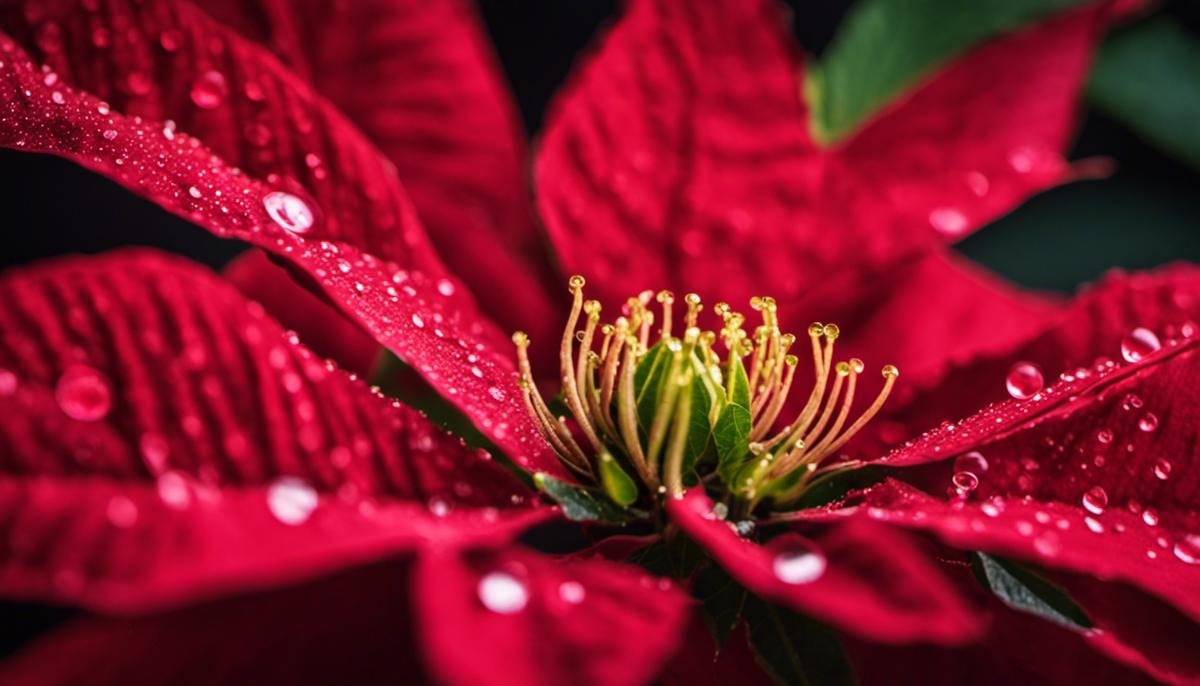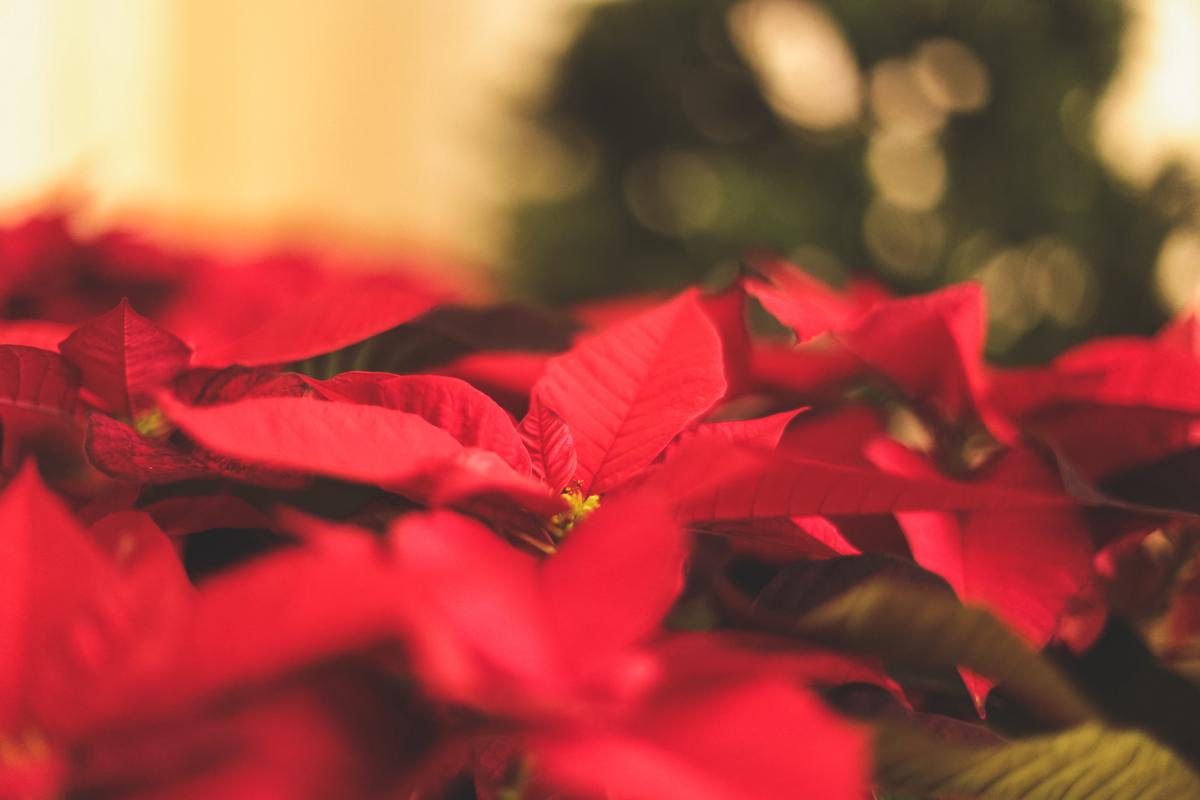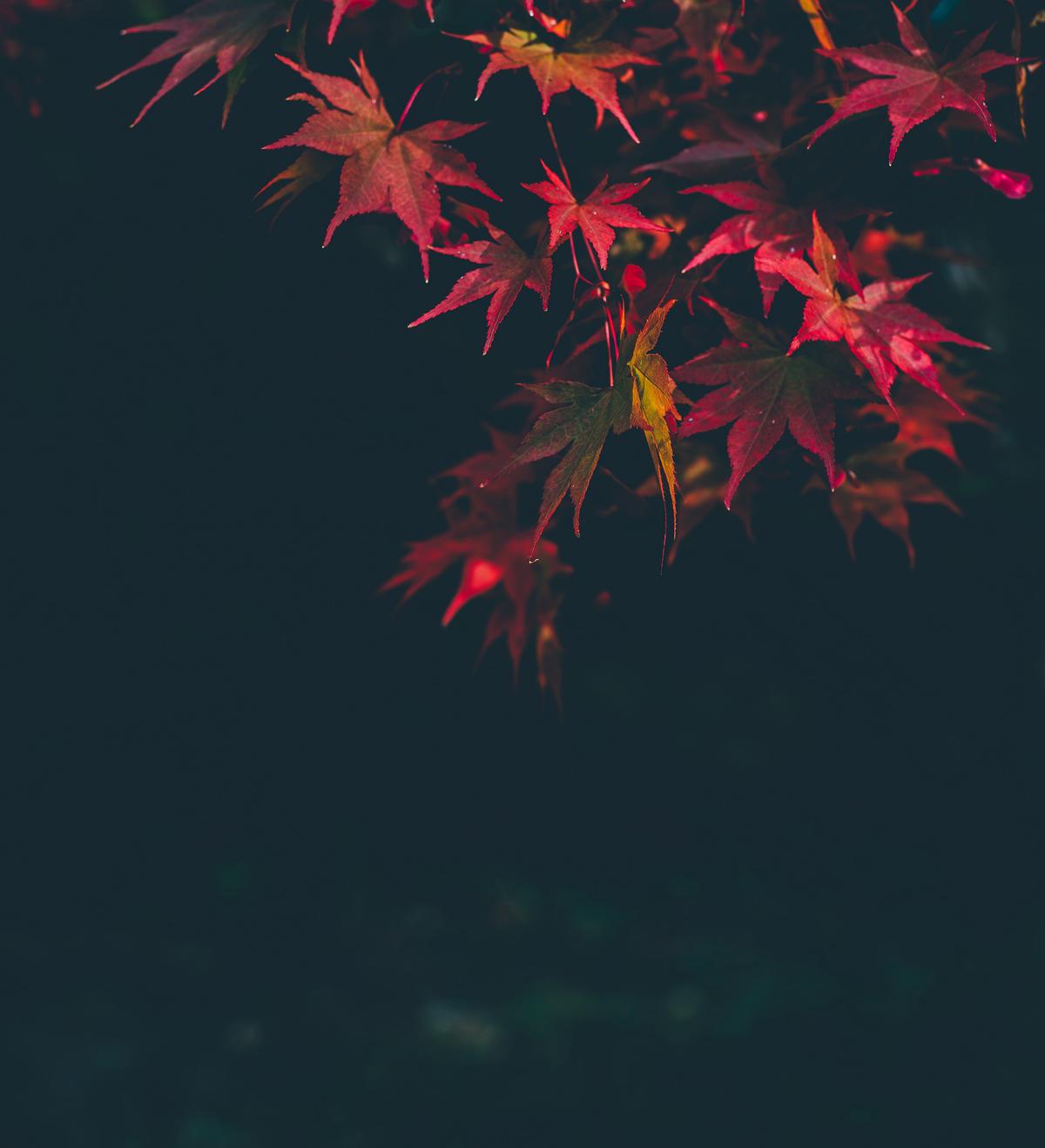Hydrating Poinsettia – A Complete Guide

For the untrained eye, watering a poinsettia is a task littered with uncertainties. From knowing exactly how much water to give, to identifying the right frequency, the process can be anything but intuitive. Equipped with proper knowledge, you can transform this seemingly tedious task into a simple routine that ensures your poinsettia thrives. This discourse will enlighten on the specific water requirements of a poinsettia, the signs of overwatering and underwatering, as well as practical watering techniques to support its healthy growth. Together, these can empower you with the necessary confidence to care for your poinsettia the way it truly deserves.
Understanding Poinsettia Water Requirements
One cannot help but shout it from the rooftops, poinsettias have a reputation for making the most mundane of spaces vibrant and festive in a snap! Truly, it’s an appreciation of their beauty that fuels this shared fascination. But alas, like any green thumb enthusiast knows, maintaining the splendor of these colorful wonders goes beyond just bringing them home from the nursery. Today, the keen focus rests on one vital aspect, the water requirements of a poinsettia. Armed with a bit of know-how, a touch of trial-and-error experience, and an unwavering enthusiasm for these holiday favorites, let’s delve into what makes our precious poinsettias thirst.
First and foremost, a critical understanding lies in the fact that nature designed poinsettias to thrive in more dry conditions than not. Originating from the tropical deciduous forests of Mexico, these plants have adapted to survive conditions alternating between dry spells and episodes of heavy rainfall. Understood through this wild lens, the watering needs of your indoor-bred poinsettia become clear: they require monitoring and balance.
Here’s the surreptitious secret, poinsettias hate ‘wet feet’. Over-watering turns the leaves yellow and promotes root rot. The key is waiting until the top inch of soil is dry to the touch before giving your poinsettia a good soak. Also, make sure that the poinsettia’s container drains well after watering to prevent water from puddling in the bottom of the pot.
Temperature and humidity are other vital aspects when watering your festive companion. Setting the poinsettia in an area where the temperature remains between 60°F and 75°F is optimum. A cooler environment means the soil dries out slower and you don’t need to water as often. Moreover, poinsettias can appreciate a boost in humidity, especially if grown in a drier indoor environment. A pebble tray with a slight amount of water or occasional misting can be beneficial.
Might one be overzealous with their hydration efforts, do not despair! It doesn’t spell the end for your poinsettia, far from it. If you spot yellow leaves, signaling overwatering, allow the plant to dry out until the top two inches of soil are parched before recommitting to a watering regimen.
In essence, all this boils down to keen observance and balance. Poinsettias are a world of vivacity and delight within our grasp, and with these watering guidelines, the journey of mastering their care within the home environment becomes well within reach. Here’s to giving the gift of life to these red and green emblems of yuletide cheer!

Recognizing Signs of Overwatering and Underwatering
Spotting the Indicators of Overwatering or Underwatering in Poinsettias
Poinsettias, the holiday stars with their flamboyant red and green foliage, possess a unique personality. It’s crucial to become in tune with these plants’ watering needs for them to flourish. Overwatering or underwatering your poinsettia can have detrimental effects on their health. But don’t get your tinsel in a tangle – there are definite signs to look for to determine if your poinsettia is guzzling too much H2O, or craving some liquid love.
Let’s dive in!
Underwatering Poinsettias: Thirsty Plant Tells-Tales
Is your poinsettia sending out S.O.S signals? A clear-cut sign of an underwatered poinsettia is drooping or wilting foliage, typically initiating from the lower leaves. They may start to lose their vibrant hue and seem faded or dry. The leaves might also curl at the edges before becoming crispy and brown.
Checking the soil is an equally sound method of confirming suspicions. Overly dry soil pulls away from the sides of the container, and if it feels dry to the touch, your green friend is most likely parched.
Reviving underwatered poinsettias involves a gradual reintroduction to watering. Infrequent, but deep watering is more beneficial than frequent shallow watering as it encourages deeper root growth. A hydrating mist can also offer a relaxing spa treatment to your poinsettia!
Overwatering Poinsettias: Drowning Plant Distress Signals
An overwatered poinsettia, on the other hand, takes on a rather heavy, waterlogged appearance. The lower leaves turn yellow and may drop off while new growth remains stunted. Foliage could also exhibit a noticeable sagging or wilting look – almost as if the poinsettia had too much holiday cheer!
Overwatering often makes the soil take on a soggy feel. When touched, the top portion of soil may feel like a sponge, indicating it’s retaining excessive moisture.
Having detected these signs, make the watering adjustments gently. Try to let the soil dry out before the next watering session and ensure the plant isn’t sitting in a pool of water in its saucer. A change in pot with better drainage might also be a consideration.
To Wrap Up…
Caring for poinsettias is a rewarding hobby, especially when the festive season rolls around and they flaunt their resplendent colors. Mastering their unique watering preference through vigilant monitoring goes a long way in maintaining their vigor. Understanding these plants’ language is an adventure, one that turns occasional hobbyists into committed enthusiasts! Happy gardening!

Photo by jessicalfadel on Unsplash
Practical Tips and Techniques for Watering Poinsettias
Diving in further into the world of poinsettias, it’s crucial to know the signs of underwatering. Those glorious red leaves will start to wilt, droop, or even curl if you’re not giving your poinsettias adequate hydration. This is your plant’s way of saying, “Hey, I need more water over here!”
The best way to know if your poinsettia needs more water is by checking the soil. Once the soil is dry to the touch, that’s your cue to get your watering can and give your festive plant a drink. Remember, waiting for the soil to become dry before watering helps to simulate the poinsettia’s natural environment, and promotes healthier growth.
But, what if you’ve left it too long and your poinsettia is looking particularly parched? All is not lost! Fill a sink with room temperature water and submerge the pot, allowing the roots to soak up the moisture for about an hour. Afterward, ensure the excess water drains out, and you will have successfully revived your underwatered poinsettia.
On the other hand, excessive watering can be a problem too. Be careful not to drown your beautiful blooms in a sea of good intentions. Overwatered poinsettias usually present with yellowed leaves that have a somewhat soggy feel. Also, the soil will appear excessively moist, which is a surefire sign of a waterlogged poinsettia.
How can you make sure this doesn’t happen? It’s all about smart watering techniques. You don’t want your poinsettia to sit in water, so make sure you empty the saucer underneath your pot after watering. The excessive water that drains out serves no purpose sitting idly underneath the pot, and in fact, it’s a hinderance to your plant’s health.
Pot drainage is integral in the prevention of overwatering. Ideally, your poinsettia should be planted in a well-draining pot, equipped with enough holes to allow any surplus water to escape. That way, your plant gets exactly what it needs and isn’t left drowning in excess water.
Be mindful that your plant’s water needs may fluctuate depending on the time of year. During the holiday season, when poinsettias are most often displayed, indoor heating can dry out the air. Therefore, poinsettias may need more frequent watering to compensate for the lack of moisture in their environment.
The key lies in regularly monitoring your poinsettias and promptly responding to their needs. Adding more water, withholding water, or adjusting the indoor humidity – whatever your plant asks of you – do it, and do it speedily. This way, your poinsettia stays vibrant and bright, maintaining its holiday cheer right on through the New Year.
On that note, remember this: there is no “one size fits all” watering guideline. Your active observation and adaptability to your poinsettia’s needs are what will yield a plant boasting luscious red leaves and a hearty constitution. Happy poinsettia parenting!

Photo by anniespratt on Unsplash
By the end of this journey, your understanding on how to properly water a poinsettia should be more profound. You are not just watering, but stimulating the life processes that enable the poinsettia to give you its vibrant and renowned holiday blooms. Recognizing signs of overwatering or underwatering will help you take immediate corrective measures, preventing possible damage to the plant. With the practical tips shared, the way you water your poinsettias will significantly enhance, not only preserving the plant’s health, but also extending its lifespan. Remember that poinsettias are not just plants for the holiday season, with the right care, they are botanical companions that captivate with their lively hues.



